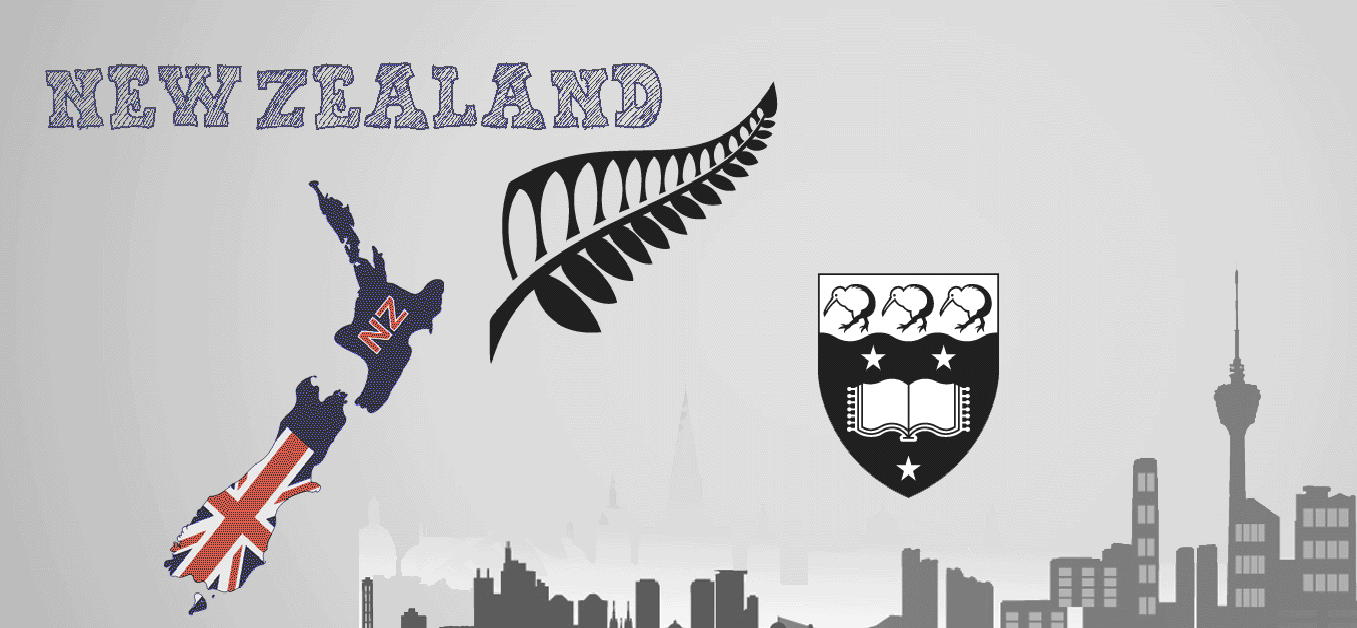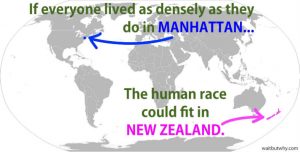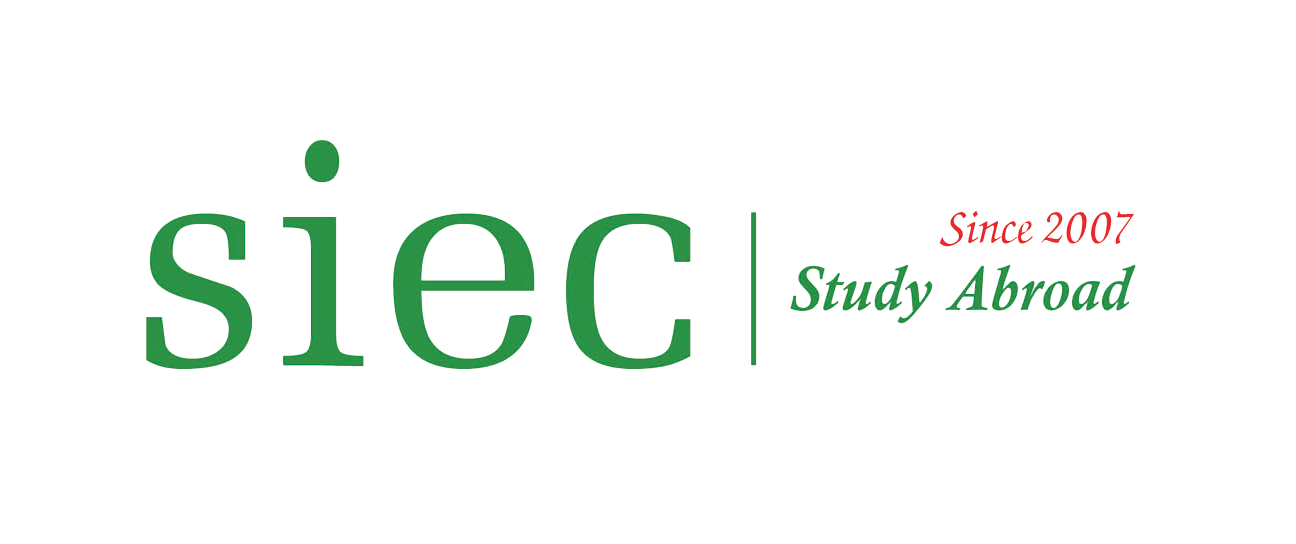
- New Zealand is part of the “Zealandia” continent, of which, 93% is submerged

- New Zealand was undiscovered and completely devoid of human beings no more than 800 years ago.
- Most of New Zealand’s population of 4.5 million is of European descent. The indigenous Maori are the largest minority at almost 15%.
- Elizabeth II is the Queen of New Zealand and the head of state.
- Sign Language is one of three official languages of New Zealand.
- New Zealand is the fastest country in the world to start a business: just one day.
- Around 1300 CE, Polynesians settled in today’s New Zealand, and developed the distinctive Maori culture.

- “Aotearoa,” often translated as “land of the long white cloud,” is the current Maori name for New Zealand.
- Of modern countries currently independent, New Zealand was the first to allow women the vote.
- It’s illegal for drug companies to advertise directly to consumers almost everywhere in the world, except in the U.S. and New Zealand.
- There are no terrestrial (land) snakes in New Zealand.
- In 2013, a bacteria was found in New Zealand that’s resistant to every single antibiotic known.
- The least corrupt countries in the world are New Zealand and Denmark, according to the Corruptions Perception Index.

- In 1999, an ex-prostitute in New Zealand, Georgina Beyer, became the world’s first openly transsexual Member of Parliament
- The steepest street in the world is Baldwin St. in Dunedin, New Zealand, with a 38° gradient.
- New Zealand’s Ninety-Mile Beach is only 55 miles long.
- Organised commercial bungee jumping first began in New Zealand in the 1980s.
- Declawing cats is legal in most U.S. states but banned in at least 22 countries including Germany, Finland, Switzerland, Australia, New Zealand and Japan.
- The logo of the Royal New Zealand Air Force is the Kiwi, a flightless bird.
- In 2006, an Australian man tried to sell New Zealand on Ebay. The starting price was AU$0.01 and managed to reach AU$3000 before Ebay closed the auction.

- New Zealand will deny people residency visas if they are overweight. There have been cases of people rejected because of obesity.
- New Zealand bans all advertising on TV on Christmas, Easter, Good Friday and ANZAC Day
- In 1996, a man broke into a radio station in New Zealand, held the manager hostage, and demanded the station to play “Rainbow Connection” by Kermit the frog.
- There are giant carnivorous snails living in New Zealand.
- During World War I, New Zealand raised an army of 100,000 men, about 10% of its population.
- The smallest wage gap between men and women is to be found in New Zealand: under 5%.
- The tuatara, a New Zealand reptile that pre-dates the dinosaurs, has three eyes.
- The oldest known fossil penguin species lived in the early Paleocene epoch of New Zealand, about 62 million years ago.

- In WW2, the U.S. and New Zealand secretly tested 3,700 “tsunami bombs” designed to destroy coastal cities.
- If everyone lived as densely as the do in Manhattan, the human race could fit in New Zealand.
- The courts in New Zealand allowed a child to be named “Number 16 Bus Shelter.”
- New Zealand’s native Maori make up only 15% of the population, but over 50% of the imprisoned population.
- The Kiwi is the national animal of New Zealand.
- American soldiers started a riot in New Zealand during World War II because they didn’t segregate their bars and they didn’t want to drink with non-white people
- In 1984, New Zealand’s Prime Minister got drunk and decided to spontaneously call a general election. He lost.
- Donald Trump was the most Googled person of 2016 in 88 countries, including Mexico, Spain, South Africa and New Zealand.
- After tourists began leaving bras on a fence in rural New Zealand, the trend caught on making the “Cardrona Bra Fence” a popular tourist attraction.
- In 2012, the New Zealand government took legal action to prevent a couple calling their child “Anal.”
The educational system in New Zealand is extremely varied and is one of the best in the world. According to scores, it has the highest levels of literacy, mathematics, and sciences in the country. The public educational system is one of the best funded in the world; New Zealand offers the highest percentage of public funding in education in the world. Several indices rate New Zealand as the number one country in the world for education.
So what makes New Zealand so unique? What makes it different than all of the other developed countries that provide education to their children? It is based on several things; first, because New Zealand natives believe in giving everyone the education that they deserve. There are many private schools, but because the country is so great at giving their public schools the monies they need, many parents are just as happy using the public system.
The other reason is because the educational system focuses on both practical and academic achievement. Instead of sticking to a regimen that no one really understands and doesn’t really tell us anything, the New Zealand public education system focuses on being open-minded and letting children explore, thus allowing them to learn in the best way that they can. This gets them ready for college or the workplace upon finishing their secondary education.
Primary and Secondary Schools
Almost all primary and secondary schools have a set schedule, usually from 9 AM to 3:30 PM. They go to school throughout the year, with four different terms spread out evenly. The terms are as follows:
- Term 1: February to mid-April
- Term 2: Late April to early July
- Term 3: Mid July to late September
- Term 4: Mid October to mid-December
There is a two-week break between terms one and two, two and three, and three and four. Between term four and the following term 1, there is a 6 week summer break, lasting part of December and all of January.
There are three types of primary and secondary schools that you will see.
- State-funded, or public, schools. These schools are free, with minor costs for books, school supplies, and uniforms (if they are used; most New Zealand schools have them). The school that a child attends is based on where they live; the divisions can be found here.
- State-integrated religious schools. There are a number of schools that are religious in nature (Catholic) which have been integrated into the public school structure. These are, of course, options for those who wish for their children to have a religious education. These schools are free, with minor costs for books, school supplies, and uniforms.
- Private schools cost anywhere from $4,000 to $28,000 a year. These may be religious, but they can also be more academically intense or provide options according to what a parent may want.
There are differences between primary and secondary school, but students must attend school from the age of 6 until they are 16. Here are some of the differences you will see.
- Primary school. From ages 6 to 12, a child attends primary school. Most primary schools have 23 to 29 students per teacher, sometimes less if it is a private or state-integrated school. Primary schools may include preschool, but there are also preschools that work on their own. Preschool is not required.
- Secondary school. Referred to as “high school” or “college,” secondary school has one teacher per 17 to 23 students; sometimes it is as low as 10 if it is a private or state-integrated school. Each secondary school uses a practical curriculum to help students get prepared for either the work world or higher education, and the curriculum is regulated by the Government’s Education Review Office. Some secondary schools will allow their senior students to take the Cambridge International Exam or the International Baccalaureate, which grant them credits and recognition in higher education programs worldwide.
Higher Education
Higher education is incredibly important, and we will explore it more in our sections that focus on the higher education systems. There are eight universities throughout the country, along with 18 technology institutions and over 600 training schools which help with specialized skills. Five of the universities in New Zealand are considered to be in the top 50 of the world’s universities according to the QS World Top 500 rankings. New Zealand is known for its business, technology, engineering, medicine, and biological sciences, and the schools are world class. The higher education program is subsidized by the New Zealand government for permanent residents.
Like you would expect from the Kiwis, New Zealand’s higher education system is also quite laid-back. Even though you have to meet vigorous requirements and have to do particular tasks in order to stay on a student visa, it is nowhere near as intense as going into an Ivy League school in New England or the Group of Eight in Australia. You will get a great education without the cost of your mental health in the process, which is a great advantage no matter who you are.
As you can see, the educational system, from primary school all the way to college, is a big focus for Kiwis. This is why many people decide to allow their children to do exchange programs and why college students will spend their entire academic career in New England. The focus on education plays a very large role in the overall attitudes about education. It is considered to be important, and that attitude rubs off in every aspect of Kiwi life. You can achieve your goals, no matter what education you happen to pursue.
You can learn more about education in New Zealand in two places, first at The Ministry of Education’s website, where you can find more information about the way that the educational system is laid out and what laws and such are in place. The other place is Education New Zealand’s Study in New Zealand website, which can give you more information about those laws and about the schools around the entire country.


